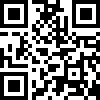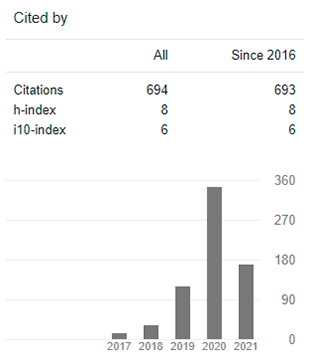ECA Chair: Fostering Critical and Collective Thinking through Cultural and Artistic Manifestations
Cátedra ECA: Fomento del Pensamiento Crítico y Colectivo a través de Manifestaciones Culturales y Artísticas
DOI:
https://doi.org/10.29394/Scientific.issn.2542-2987.2024.9.31.13.275-295Keywords:
art education, critical thinking, culture, teaching methodology, EcuadorAbstract
This work evaluates the impact of implementing cultural and artistic expressions to promote observation and the development of critical and collective thinking in the subject of Cultural and Artistic Education (ECA) in Ecuador. Theoretical references were analyzed and teaching methodologies were characterized. The methodology employed was based on a qualitative exploratory approach, analyzing high-impact articles. The artistic and cultural evolution in countries such as Mexico, Spain, and Chile was examined using data from the Organisation for Economic Co-operation and Development (OECD), establishing comparisons with Ecuador. A triangulation of the fundamental axes of art was presented: theory, practice, and sociocultural context. The results indicate that, although Ecuador faces challenges in implementing ECA, efforts are being made to improve the situation. It is concluded that the acceptance of the subject has encountered difficulties in Ecuador, but initiatives are being implemented to address them. As added value, various recommendations are offered for continuous improvement in this area, emphasizing the importance of harmoniously integrating the three axes of art in Ecuadorian education.
Downloads
References
Art Madrid MARKET (2019). ¿Por qué hay que educar en arte y cultura?. España: Art Space Madrid, S.L.
Blanco, A. (2020). La importancia de las Artes en la educación de la nación y el individuo. Debates por la Historia, 8(1), 17-40, e-ISSN: 2594-2956. México: Universidad Autónoma de Chihuahua.
CNCA (2016). El aporte de las artes y la cultura a una educación de calidad: Caja de herramientas de Educación Artística. Segunda Edición, ISBN: 978-956-352-146-7. Chile: Consejo Nacional de la Cultura y las Artes.
Hernández-Sampieri, R., & Mendoza, C. (2018). Metodología de la investigación. Las rutas cuantitativa, cualitativa y mixta. ISBN: 978-1-4562-6096-5. Ciudad de México, México: Editorial McGraw-Hill Education.
Longan, S. (2011). Sobre la definición del arte y otras disquisiciones. Revista Comunicación, 20(1), 75-79, ISSN: 0379-3974. Costa Rica: Instituto Tecnológico de Costa Rica.
MINEDUC (2016b). Currículo de EGB y BGU Educación Cultural y Artística. Quito, Ecuador: Ministerio de Educación.
SC (2014). Participan Conaculta, INBA e INAH en la Feria de Museos de la Ciudad de México. México: Secretaría de Cultura.
OECD (1998). Education at a Glance 1998. OECD Indicators. Paris, France: OECD Publications Service.
OECD (2003). Education at a Glance 2003. OECD Indicators. Paris, France: OECD Publications Service.
OECD (2004). Education at a Glance 2004. OECD Indicators. Paris, France: OECD Publications Service.
OECD (2012a,b). Education at a Glance 2012. OECD Indicators. Paris, France: OECD Publications Service.
Hegel, G. (1973a,b). Introducción a la Estética. Segunda Edición, ISBN: 84-297-0886-3. Barcelona, España: Ediciones Península.
Cameron, J. (2011a,b). El camino del Artista: Un curso de descubrimiento y rescate de tu propia creatividad. ISBN: 978-84-03-05297-0. Madrid, España: Santillana Ediciones Generales, S.L.
Winner, E., Goldstein, T., & Vincent-Lancrin, S. (2013a,b). ¿El arte por el arte?: La influencia de la educación artística. París, Francia: Organización para la Cooperación y el Desarrollo Económicos.
MINEDUC (2016a). Área de Educación Cultural y Artística: Subnivel Superior de Educación General Básica y Nivel de Bachillerato. Quito, Ecuador: Ministerio de Educación del Ecuador.
Zárate, J. (2016a,b). Desarrollo del pensamiento crítico por medio de aplicación multimedia en la asignatura de educación artística orientada a los estudiantes del primer año de bachillerato. Trabajo de Titulación. Riobamba, Ecuador: Escuela Superior Politécnica de Chimborazo.
Chandi, C., Calispa, A., & Vinueza, M. (2018a,b). Desafíos de la educación cultural y artística en los niveles de educación obligatoria de Ecuador. Congreso de Ciencia y Tecnología ESPE, 13(1), 189-192, e-ISSN: 1390-4663. Recuperado de: https://doi.org/10.24133/cctespe.v13i1.781
Gil, F. (2018a,b). Museos y formación del pensamiento social en educación primaria: una propuesta de intervención didáctica. Tesis Doctoral. España: Universidad Autónoma de Barcelona.
Barbosa, A. (2022a,b). Arte/Educación: Textos seleccionados. Buenos Aires, Argentina: CLACSO; Universidad Nacional de las Artes.
Véliz, A. (2023a,b). La importancia de la educación cultural en la educación actual. México: Movimiento Antorchista Nacional; Innovación Tecnológica y Soluciones Web S.A. de C.V.
Published
How to Cite
Issue
Section
License
Copyright (c) 2024 INDTEC, C.A.

This work is licensed under a Creative Commons Attribution-NonCommercial-ShareAlike 4.0 International License.
The content of the journals of this site, are under a Creative Commons Attribution-Noncommercial-Share Alike 4.0 International License.













